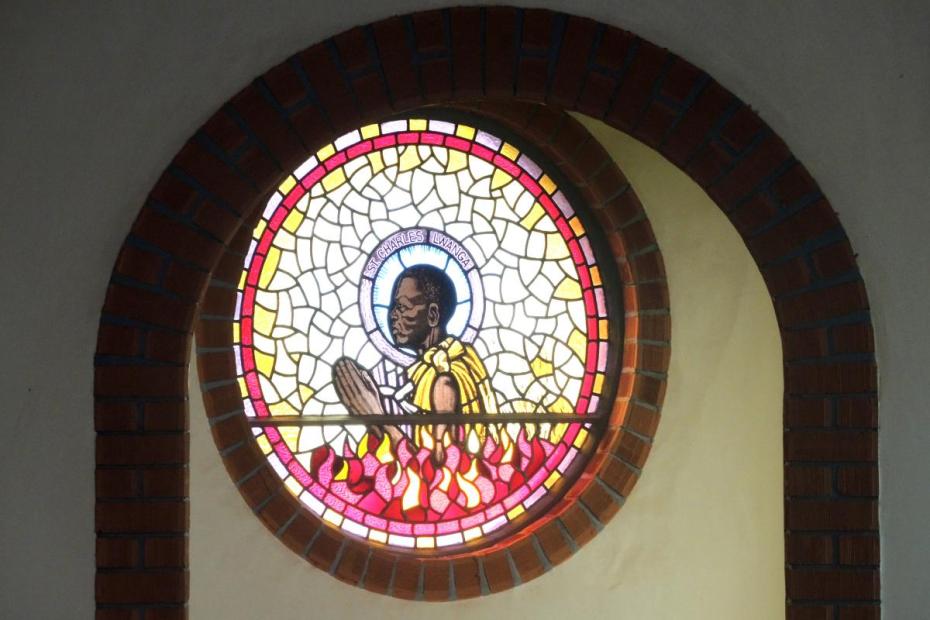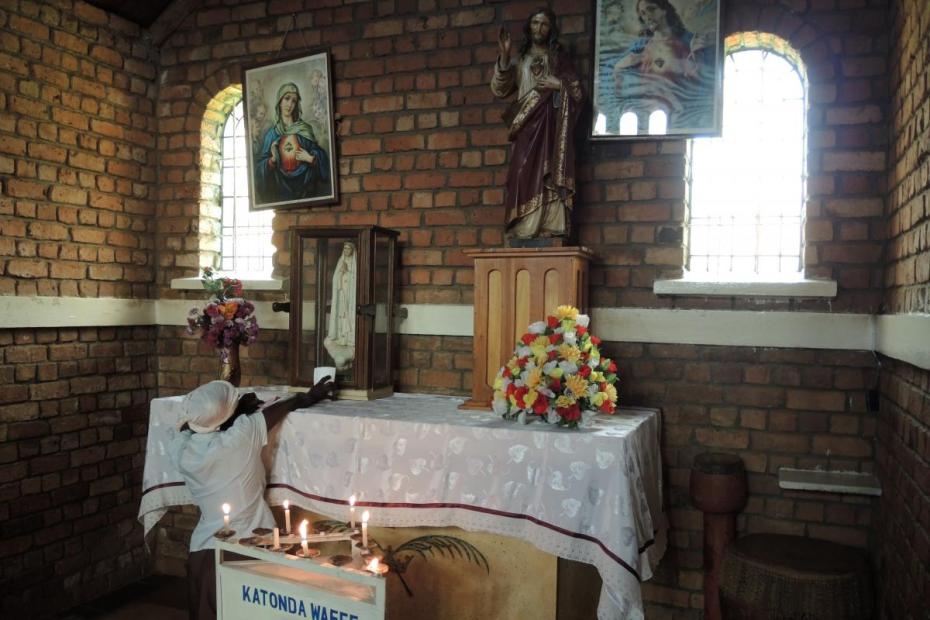-

St. Peter's Cathedral Nsambya, Kampala, Uganda
-

Rosary beads hang from a car's rearview mirror.
-

-

Kampala is composed of many hills. Better-off families tend to live higher in the hills.
-

A neighborhood just outside Kampala. Like many others, it is flush with small scale businesses.
-

An image of St. Charles Lwanga, one of the Uganda martyrs, in Kinshasa, Uganda.
-

Older women are generally referred to by the honorific, "jjajja," or grandmother. In traditional dress, this woman sits on a mat on the floor, the traditional place for women in Buganda society.
-

Religious and familial decorations in a family home near Jinja Karoli, Uganda.
-

Portraits of three important leaders for Ugandan Catholics: the king, the archbishop, and the pope.
-

On Confirmation Day at Jinja Karoli parish, Kampala, Uganda, 600 young people are being confirmed.
-

-

Grotto outside Christ the King Church, central Kampala, Uganda.
-

Catholic devotional images for the home for sale on the streets of central Kampala, Uganda.
-

Side shrine at the Cathedral of St. Peter, Nsambya, Kampala, Uganda.
-

Women in the traditional style of Sunday formal dress wait outside church for seats at the next Mass.
-

-

Pilgrims on the steps from the main outdoor altar leading up to the statue of Mary at Kiwamirembe, Our Lady Queen of Peace, Uganda.
-

Around Kampala, as in many other parts of the country, Uganda is a city of hills. Churches and shrines are generally located on tops of those hills, even though this means it is a difficult uphill walk for many believers who live below. In pre-Christian times, worship to local deities was offered at the top of hills as well. Christian churches and Muslim mosques have largely supplanted those spots, though at one hilltop church a priest pointed to a nearby wooded hilltop where people, including Christians, persisted in worshiping local gods.
Meanwhile, Uganda’s churches, often made of brown brick, seem to want to root the church in the very earth of Uganda.
Many churches feature images of the Uganda Martyrs, but aside from that the imagery of Catholicism in statues and pictures tends to be very European, usually in a 19th-century devotional style. At Mass, the music often draws on Ugandan precedents, but the image of the clergy, including the vestments and crucifixes, is generally very European.
Devotional objects such as rosaries, pictures and statues play an important role in Ugandan Catholic culture. These also overwhelmingly tend to be European in style, with no attempts to indigenize the forms.

















